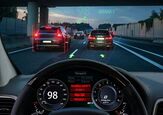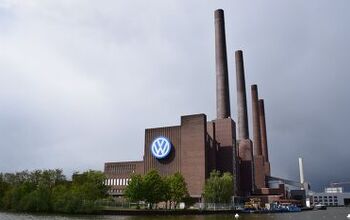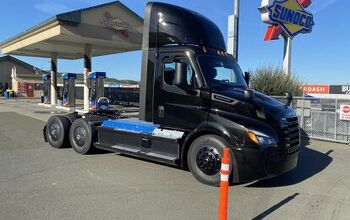The Top Ten Platforms Of… 2016?
As the global auto industry becomes ever more competitive, the pressure to deliver a high volume of products and sales per platform is driving companies to develop mega-platforms that underpin millions of global sales units. And sorry folks, but mass market cars aren’t going to become less homogeneous any time soon… in fact PriceWaterhouseCooper’s Anthony Pratt took a look into his magic crystal ball recently, and he forecasts that in just over five years, a mere ten platforms will account for over 27 million units of global sales volume. It’s just the next step on the way to the ultimate dystopia: a world in which every new car in the world is identical under the skin. Spooky! Hit the jump for more details on the (projected) top ten platforms of 2016.
2. Volkswagen MQB: 3.86 million units. The MQB, which is just being launched and will be used on a scant 24,000 vehicles in 2010, will provide the mechanicals for nearly all of VW’s front-wheel-drive models. The VW Polo, Golf and Passat are likely to generate the biggest volume. Interestingly, the midsized sedan to be produced in VW’s new Chattanooga, Tenn., plant will use an older platform instead of the MQB architecture. VW did that to keep the price down.
3. Toyota MC: 3.3 million units. With hot-selling models such as the Camry, RAV4 and Prius, this is the auto industry’s largest current platform, with 3 million units in 2010.
4. Ford C1: 2.7 million units. With a diverse model lineup that currently includes the , Mazda3, and others, this platform is a good example of Ford’s One World strategy.
5. Fiat 199: 2.6 million units. This platform underpins the Palio, Punto, Uno and other small cars — the heart of Fiat’s lineup. The Italian automaker plans to introduce Dodge and Chrysler variants.
6. Hyundai HD: 2.5 million units. In North America, this platform supports the and Tucson, plus the and Forte. As Hyundai gains share in Europe, the United States and China, look for it to move steadily up this list.
7. Toyota NBC: 2.2 million units. This platform, which informally stood for “New Basic Car,” spawned the Yaris supermini and , among others. Toyota plans to spin off a small hybrid from this platform.
8. GM Gamma: 2.1 million units. The Opel Corsa is this platform’s top seller. In the United States, the Chevrolet Spark and Aveo will carry Gamma’s DNA.
9. GM Delta: 2.0 million units. The Chevrolet Cruze and Opel Astra will be big sellers — proof that GM can design common platforms for Europe and the United States. In China, the Buick Excelle has carved out a profitable niche.
10. PSA PF2: 1.8 million units. Peugeot and Citroen derive superminis, sedans and MPVs from this platform, the only one in the top 10 that doesn’t have a U.S. model.
More by Edward Niedermeyer
Latest Car Reviews
Read moreLatest Product Reviews
Read moreRecent Comments
- Jalop1991 There is no inflation. Everything is cheaper than it was 5 years ago. SHRIMP AND GRITS!
- ChristianWimmer Exterior and interior look pretty flawless for such a high mileage car. To me this is an indication that it was well-maintained and driven responsibly. It’s not my cup of tea but it’s bound to find an enthusiastic owner out there.And with ANY car, always budget for maintenance.
- Fred I'm a fan and watch every race. I've missed a few of the live races, but ESPN repeats them during more reasonable hours.
- Mikesixes It has potential benefits, but it has potential risks, too. It has inevitable costs, both in the price of the car and in future maintenance. Cars with ABS and airbags have cost me at least 2000 bucks in repairs, and have never saved me from any accidents. I'd rather these features were optional, and let the insurance companies figure out whether they do any good or not, and adjust their rates accordingly.
- Daniel Bridger Bidenomics working.

































Comments
Join the conversation
What you should expect is two things: One, more recall numbers in the millions. Not that this is a bad thing as net quality will probably improve, but any recall on a common component in any of these platforms will be huge. Two, more posts on Autoblog by people who don't understand #1.
Platform data is of course important and I always like to read about trends in platforming, etc. However, one enduring problem I have with platform counts is the lack of clarity around the definition of the word. Let me illustrate: OEM A has 3 platforms from which it derives 15 models, for a total volume of 1,500,000 units. OEM B has 5 platforms from which it derives 15 models, for a total volume of 1,500,000 units. Simplistically, we would say OEM A is "better" because it has fewer platforms and thus can generate more scale economies. But can it? Let me add a complication: For each of the 5 models OEM A derives from each of its 3 platforms, parts commonality is 20%. At OEM B it is 60%. NOW who has the best scale economies? My point is that until we know what a platform really is discussions of it are like evaluating basketball teams by average height of player: good to know, and useful, but so very far from the whole story. Further (while in professorial mode) what scale economies are we looking at anyway? If OEM builds all these cars in 25 plants and B in 10, tooling investments are radically different. And finally, most component scale economies exhaust at the SUPPLIER plant level: if the largest machine in the world for making brake calipers (e.g.) makes 150,000 a year, then for any volume over that I just buy more machines... I don't go to a 500,000-unit machines. I think "scale" is the single most over-rated concept in automotive, beyond some minimum output level per OEM of say 2 mm cars. (It's a different story in powertrain, I agree, but the platform discussion is usually not about powertrain.)